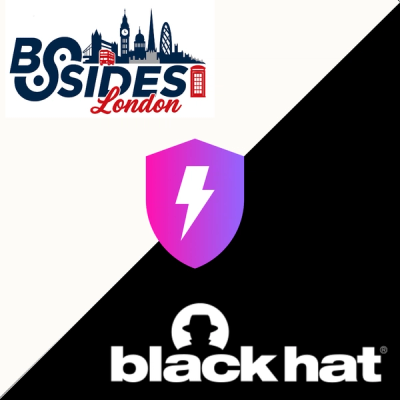


alien-signals
This project explores a push-pull based signal algorithm. Its current implementation is similar to or related to certain other frontend projects:
We impose some constraints (such as not using Array/Set/Map and disallowing function recursion in the algorithmic core) to ensure performance. We found that under these conditions, maintaining algorithmic simplicity offers more significant improvements than complex scheduling strategies.
Even though Vue 3.4 is already optimized, alien-signals is still noticeably faster. (I wrote code for both, and since they share similar algorithms, they’re quite comparable.)

Benchmark repo: https://github.com/transitive-bullshit/js-reactivity-benchmark
Background
I spent considerable time optimizing Vue 3.4’s reactivity system, gaining experience along the way. Since Vue 3.5 switched to a pull-based algorithm similar to Preact, I decided to continue researching a push-pull based implementation in a separate project. Our end goal is to implement fully incremental AST parsing and virtual code generation in Vue language tools, based on alien-signals.
Other Language Implementations
Derived Projects
Adoption
Usage
Basic APIs
import { signal, computed, effect } from 'alien-signals';
const count = signal(1);
const doubleCount = computed(() => count() * 2);
effect(() => {
console.log(`Count is: ${count()}`);
});
console.log(doubleCount());
count(2);
console.log(doubleCount());
Effect Scope
import { signal, effect, effectScope } from 'alien-signals';
const count = signal(1);
const stopScope = effectScope(() => {
effect(() => {
console.log(`Count in scope: ${count()}`);
});
});
count(2);
stopScope();
count(3);
Manual Triggering
The trigger() function allows you to manually trigger updates for downstream dependencies when you've directly mutated a signal's value without using the signal setter:
import { signal, computed, trigger } from 'alien-signals';
const arr = signal<number[]>([]);
const length = computed(() => arr().length);
console.log(length());
arr().push(1);
console.log(length());
trigger(arr);
console.log(length());
You can also trigger multiple signals at once:
import { signal, computed, trigger } from 'alien-signals';
const src1 = signal<number[]>([]);
const src2 = signal<number[]>([]);
const total = computed(() => src1().length + src2().length);
src1().push(1);
src2().push(2);
trigger(() => {
src1();
src2();
});
console.log(total());
Creating Your Own Surface API
You can reuse alien-signals’ core algorithm via createReactiveSystem() to build your own signal API. For implementation examples, see:
About propagate and checkDirty functions
In order to eliminate recursive calls and improve performance, we record the last link node of the previous loop in propagate and checkDirty functions, and implement the rollback logic to return to this node.
This results in code that is difficult to understand, and you don't necessarily get the same performance improvements in other languages, so we record the original implementation without eliminating recursive calls here for reference.
propagate
function propagate(link: Link): void {
do {
const sub = link.sub;
let flags = sub.flags;
if (!(flags & (ReactiveFlags.RecursedCheck | ReactiveFlags.Recursed | ReactiveFlags.Dirty | ReactiveFlags.Pending))) {
sub.flags = flags | ReactiveFlags.Pending;
} else if (!(flags & (ReactiveFlags.RecursedCheck | ReactiveFlags.Recursed))) {
flags = ReactiveFlags.None;
} else if (!(flags & ReactiveFlags.RecursedCheck)) {
sub.flags = (flags & ~ReactiveFlags.Recursed) | ReactiveFlags.Pending;
} else if (!(flags & (ReactiveFlags.Dirty | ReactiveFlags.Pending)) && isValidLink(link, sub)) {
sub.flags = flags | ReactiveFlags.Recursed | ReactiveFlags.Pending;
flags &= ReactiveFlags.Mutable;
} else {
flags = ReactiveFlags.None;
}
if (flags & ReactiveFlags.Watching) {
notify(sub);
}
if (flags & ReactiveFlags.Mutable) {
const subSubs = sub.subs;
if (subSubs !== undefined) {
propagate(subSubs);
}
}
link = link.nextSub!;
} while (link !== undefined);
}
checkDirty
function checkDirty(link: Link, sub: ReactiveNode): boolean {
do {
const dep = link.dep;
const depFlags = dep.flags;
if (sub.flags & ReactiveFlags.Dirty) {
return true;
} else if ((depFlags & (ReactiveFlags.Mutable | ReactiveFlags.Dirty)) === (ReactiveFlags.Mutable | ReactiveFlags.Dirty)) {
if (update(dep)) {
const subs = dep.subs!;
if (subs.nextSub !== undefined) {
shallowPropagate(subs);
}
return true;
}
} else if ((depFlags & (ReactiveFlags.Mutable | ReactiveFlags.Pending)) === (ReactiveFlags.Mutable | ReactiveFlags.Pending)) {
if (checkDirty(dep.deps!, dep)) {
if (update(dep)) {
const subs = dep.subs!;
if (subs.nextSub !== undefined) {
shallowPropagate(subs);
}
return true;
}
} else {
dep.flags = depFlags & ~ReactiveFlags.Pending;
}
}
link = link.nextDep!;
} while (link !== undefined);
return false;
}




